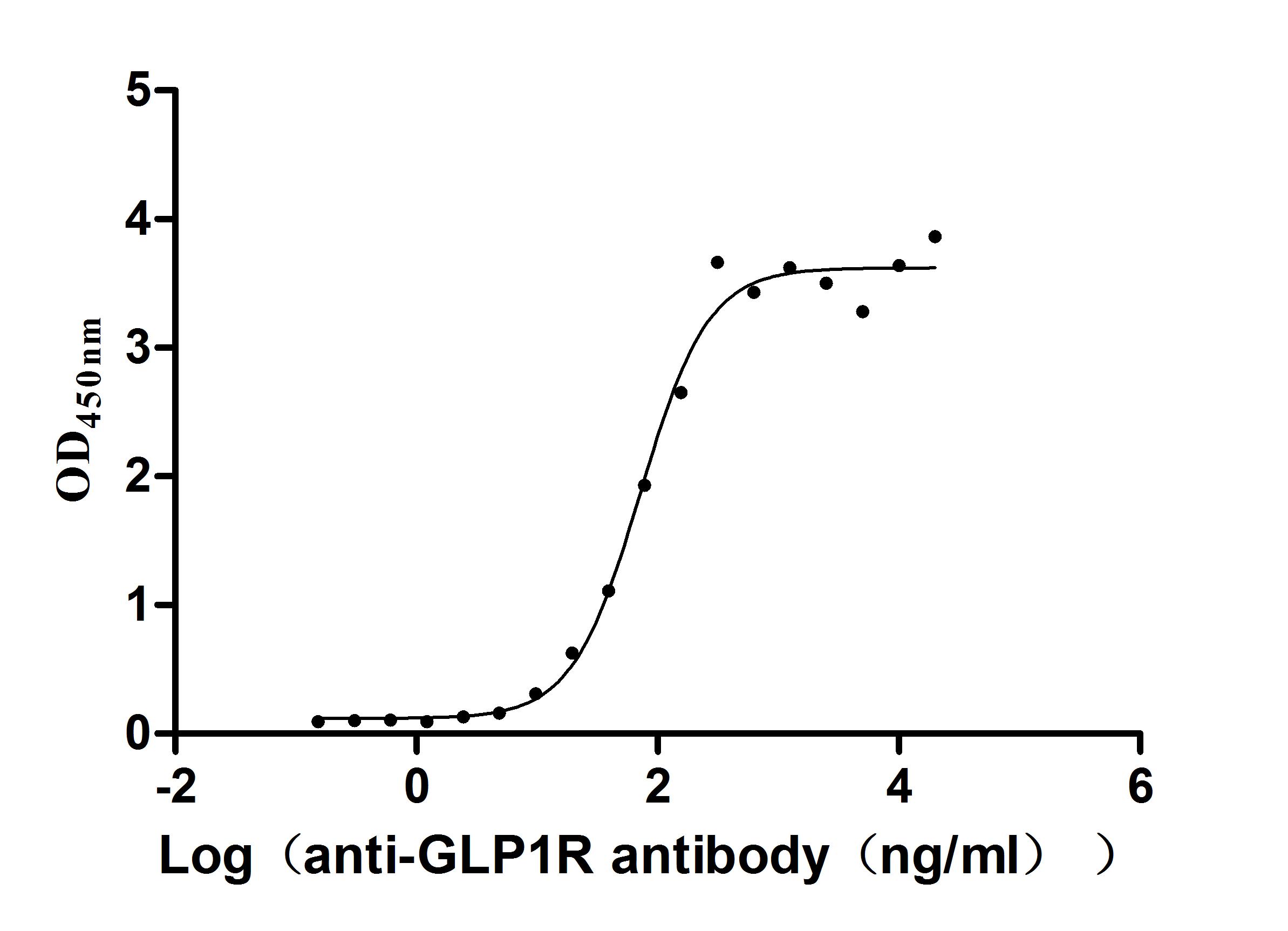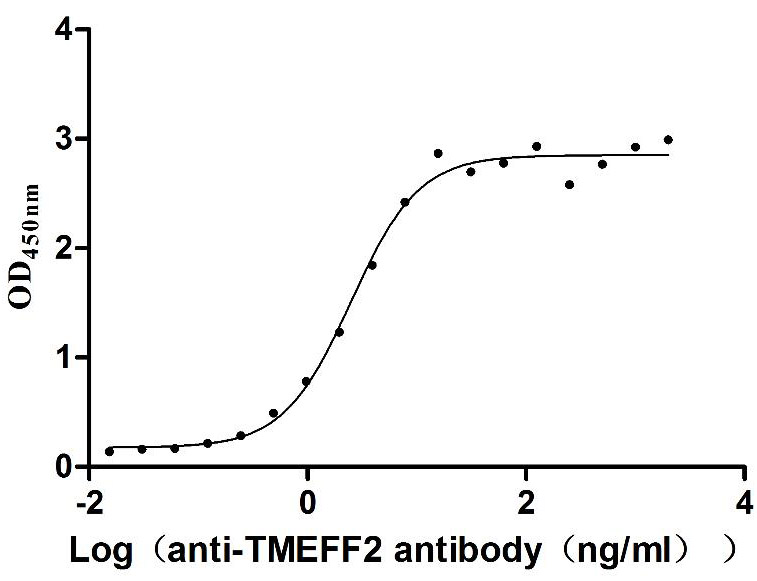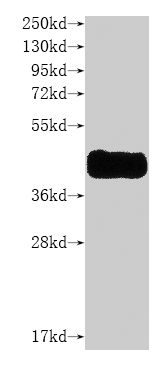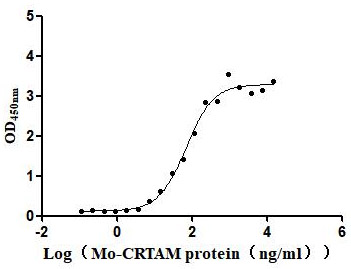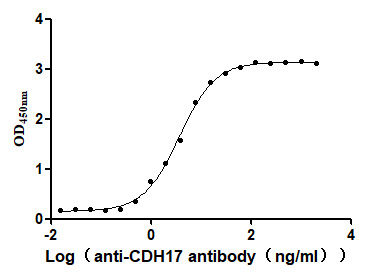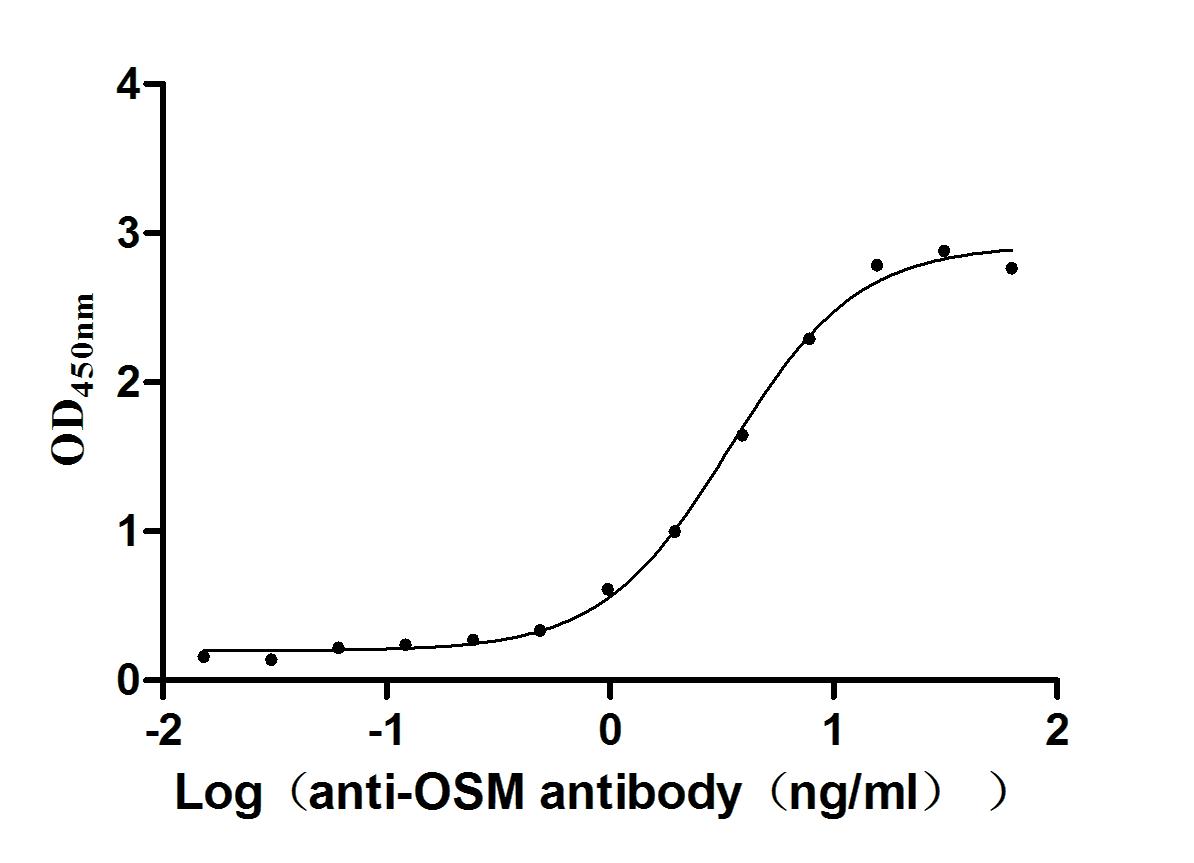Recombinant Saccharomyces cerevisiae Cell division control protein 4 (CDC4), partial
-
中文名稱:Recombinant Saccharomyces cerevisiae Cell division control protein 4(CDC4) ,partial
-
貨號(hào):CSB-YP357226SVG
-
規(guī)格:
-
來(lái)源:Yeast
-
其他:
-
中文名稱:Recombinant Saccharomyces cerevisiae Cell division control protein 4(CDC4) ,partial
-
貨號(hào):CSB-EP357226SVG
-
規(guī)格:
-
來(lái)源:E.coli
-
其他:
-
中文名稱:Recombinant Saccharomyces cerevisiae Cell division control protein 4(CDC4) ,partial
-
貨號(hào):CSB-EP357226SVG-B
-
規(guī)格:
-
來(lái)源:E.coli
-
共軛:Avi-tag Biotinylated
E. coli biotin ligase (BirA) is highly specific in covalently attaching biotin to the 15 amino acid AviTag peptide. This recombinant protein was biotinylated in vivo by AviTag-BirA technology, which method is BriA catalyzes amide linkage between the biotin and the specific lysine of the AviTag.
-
其他:
-
中文名稱:Recombinant Saccharomyces cerevisiae Cell division control protein 4(CDC4) ,partial
-
貨號(hào):CSB-BP357226SVG
-
規(guī)格:
-
來(lái)源:Baculovirus
-
其他:
-
中文名稱:Recombinant Saccharomyces cerevisiae Cell division control protein 4(CDC4) ,partial
-
貨號(hào):CSB-MP357226SVG
-
規(guī)格:
-
來(lái)源:Mammalian cell
-
其他:
產(chǎn)品詳情
-
純度:>85% (SDS-PAGE)
-
基因名:CDC4
-
Uniprot No.:
-
別名:CDC4; YFL009WCell division control protein 4; E3 ubiquitin ligase complex SCF subunit CDC4; F-box protein CDC4
-
種屬:Saccharomyces cerevisiae (strain ATCC 204508 / S288c) (Baker's yeast)
-
蛋白長(zhǎng)度:Partial
-
蛋白標(biāo)簽:Tag?type?will?be?determined?during?the?manufacturing?process.
The tag type will be determined during production process. If you have specified tag type, please tell us and we will develop the specified tag preferentially. -
產(chǎn)品提供形式:Lyophilized powder
Note: We will preferentially ship the format that we have in stock, however, if you have any special requirement for the format, please remark your requirement when placing the order, we will prepare according to your demand. -
復(fù)溶:We recommend that this vial be briefly centrifuged prior to opening to bring the contents to the bottom. Please reconstitute protein in deionized sterile water to a concentration of 0.1-1.0 mg/mL.We recommend to add 5-50% of glycerol (final concentration) and aliquot for long-term storage at -20℃/-80℃. Our default final concentration of glycerol is 50%. Customers could use it as reference.
-
儲(chǔ)存條件:Store at -20°C/-80°C upon receipt, aliquoting is necessary for mutiple use. Avoid repeated freeze-thaw cycles.
-
保質(zhì)期:The shelf life is related to many factors, storage state, buffer ingredients, storage temperature and the stability of the protein itself.
Generally, the shelf life of liquid form is 6 months at -20°C/-80°C. The shelf life of lyophilized form is 12 months at -20°C/-80°C. -
貨期:Delivery time may differ from different purchasing way or location, please kindly consult your local distributors for specific delivery time.Note: All of our proteins are default shipped with normal blue ice packs, if you request to ship with dry ice, please communicate with us in advance and extra fees will be charged.
-
注意事項(xiàng):Repeated freezing and thawing is not recommended. Store working aliquots at 4°C for up to one week.
-
Datasheet :Please contact us to get it.
靶點(diǎn)詳情
-
功能:Substrate recognition component of a SCF (SKP1-CUL1-F-box protein) E3 ubiquitin-protein ligase complex which mediates the ubiquitination and subsequent proteasomal degradation of target proteins. Recognizes and binds to phosphorylated target proteins. Directs ubiquitination of the phosphorylated CDK inhibitor SIC1. Involved in the degradation of CDC6 together with CDC34/UBC3 and CDC53, and in restricting the degradation of FAR1 to the nucleus. Is essential for initiation of DNA replication and separation of the spindle pole bodies to form the poles of the mitotic spindle. It also plays a role in bud development, fusion of zygotic nuclei after conjugation and various aspects of sporulation. Required for HTA1-HTB1 locus transcription activation. Required for G1/S and G2/M transition.
-
基因功能參考文獻(xiàn):
- An allosteric conduit facilitates dynamic multisite substrate recognition by the SCF ubiquitin ligase. PMID: 28045046
- Our observations suggest that both APC(Cdh1) and SCF(Cdc4)-dependent proteolysis of Clb6 at the G1/S border are crucial for multiple cell cycle regulated events including proper expression of Clb2, the G1/S and G2/M cell cycle transitions and for proper completion of cell division at mitotic exit. PMID: 26994663
- an intricate coordination between Hst3 synthesis, genome-wide H3K56 deacetylation by Hst3, and cell cycle-regulated degradation of Hst3 by cyclin-dependent kinases and SCF(Cdc4). PMID: 24648511
- we show that Cln3 is redundantly targeted by two F-box proteins with key cell cycle-regulatory roles, Cdc4 and Grr1 PMID: 22844257
- Individually weak dispersed Sic1 phospho sites engage Cdc4 in a dynamic equilibrium. The multisite nature of this interaction confers cooperative dependence on kinase activity for Sic1 recognition PMID: 22328159
- analysis of structure/function of a dynamic complex of the intrinsically disordered Sic1 with the Cdc4 subunit of an SCF ubiquitin ligase PMID: 20399186
- Data show that high-affinity binding of recombinant Cdc4 to Tec1 phosphopeptides requires phosphorylation of not only T273 but also a second site, T276. PMID: 19897738
- SCFCdc4 ubiquitin ligase mediate the degradation of Tec1, a cofactor of Ste12 for the expression of filamentation genes, during pheromone response. PMID: 15620356
- SCF(Cdc4) ubiquitin ligase complex regulates Clb6 turnover PMID: 16508019
- A model that explains the role of multiple cyclin E/Sic1 degrons is provided by the findings that Fbw7 and Cdc4 dimerize, and that Cdc4 dimerization increases the rate and processivity of Sic1 ubiquitination in vitro. PMID: 17434132
- the SCFCdc4 dimer suprafacial orientation accommodates multiple geometries for substrate ubiquitination PMID: 17574027
- SCF(Cdc4)-dependent degradation required phosphorylation of Rcn1 by Mck1 PMID: 17954914
- findings indicate that the SCF(Cdc4) complex regulates S phase entry not only through degradation of Sic1, but also through degradation of Swi5 PMID: 18787112
- The observation of this unusual binding mode between Sic1 and Cdc4 extends the understanding of protein interactions from predominantly static complexes to include dynamic ensembles of intrinsically disordered states. PMID: 19008353
顯示更多
收起更多
-
亞細(xì)胞定位:Nucleus.
-
數(shù)據(jù)庫(kù)鏈接:
KEGG: sce:YFL009W
STRING: 4932.YFL009W
Most popular with customers
-
Recombinant Human Epithelial discoidin domain-containing receptor 1 (DDR1), partial (Active)
Express system: Mammalian cell
Species: Homo sapiens (Human)
-
Recombinant Human Glucagon-like peptide 1 receptor (GLP1R), partial (Active)
Express system: Mammalian cell
Species: Homo sapiens (Human)
-
Recombinant Human Tomoregulin-2 (TMEFF2), partial (Active)
Express system: Mammalian cell
Species: Homo sapiens (Human)
-
Recombinant Human C-C chemokine receptor type 8 (CCR8)-VLPs (Active)
Express system: Mammalian cell
Species: Homo sapiens (Human)
-
Recombinant Mouse Cell adhesion molecule 1 (Cadm1), partial (Active)
Express system: Mammalian cell
Species: Mus musculus (Mouse)
-
Recombinant Human Cadherin-17 (CDH17), partial (Active)
Express system: Mammalian cell
Species: Homo sapiens (Human)
-
Recombinant Human Oncostatin-M (OSM), partial (Active)
Express system: Mammalian cell
Species: Homo sapiens (Human)
-
Recombinant Human Carcinoembryonic antigen-related cell adhesion molecule 8(CEACAM8) (Active)
Express system: Mammalian cell
Species: Homo sapiens (Human)



